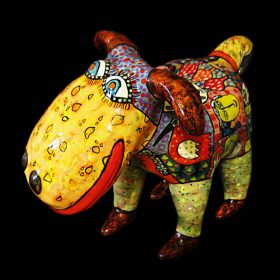
The huge variety in the colors our different breeds come in makes it all the more amazing to us that only two basic pigments determine the color of dogs: eumelanin (black) and phaeomelanin (red).
When you consider the smorgasbord of colors that dogs come in, you have to marvel that all those different colors – and every variation in between – are created by only those two pigments.These days, we know that the dog genome has around 3 billion base pairs of DNA, and thousands of genes, but only eight of those genes are associated with coat color.
As a breeder, you may think you control a dog’s color by selecting his parents carefully, but as far as we can tell, you’re narrowing how the roll of the dice turn out because ultimately, the color of a dog is at the mercy of his gene pool. That being said, if a breeder has a strong grasp of genetics, knows how dominant genes work with regards to recessive ones, acknowledges that “stuff happens (i.e., mutations), and knows the dogs behind a potential breeding pair, then predicting the color of puppies can be a statistical probability.
Ceramic dog by Sergey Gerasimenko available here.
